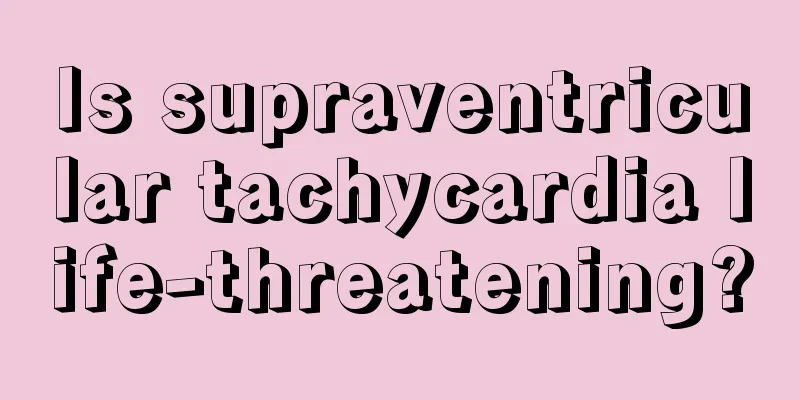Is supraventricular tachycardia life-threatening?

|
Whether supraventricular tachycardia is life-threatening is a question many people ask. Ventricular tachycardia is a manifestation of heart disease and is the abbreviation of supraventricular tachycardia. Patients experience palpitations and discomfort in the precordial area, and an electrocardiogram shows a heart rate of more than 100 beats per minute. This disease is relatively common in clinical practice and can easily cause sudden death. The prevention of this disease is also very important. Patients should pay attention to rest and avoid overwork. Paroxysmal supraventricular tachycardia is a common arrhythmia, which is a series of clinical manifestations caused by a sudden and rapid increase in heartbeat. This disease is common in people without organic heart disease, more common in young people than in old people, and slightly more common in women than in men. It has now been proven that paroxysmal supraventricular tachycardia is related to certain congenital heart structural abnormalities, and this tiny structural change cannot be detected without special examination in most cases. Symptoms: When the patient is in a calm state and without any warning signs, the heartbeat suddenly accelerates, with the pulse usually between 160 and 240 beats per minute, and in children it can reach 300 beats per minute. The heartbeat also returns to normal suddenly. The duration of an attack varies, from a few seconds to a few days. In most patients, the attack can terminate on its own, but in a few patients, medication is required to terminate the attack. Other symptoms vary in severity. In mild cases, there may be only palpitations, shortness of breath, dizziness, and fatigue. In severe cases, there may be chest pain, difficulty breathing, fainting, convulsions, or shock. The severity of the symptoms depends on the speed of the heart rate during the attack, whether there are other heart diseases and the patient's tolerance. Diagnosis: Electrocardiogram can be used to make the diagnosis when the disease occurs. The electrocardiogram may be normal when the disease is not severe. Go to the hospital for an induction test and do an electrocardiogram after induction to confirm the diagnosis. For some patients, the electrocardiogram shows preexcitation syndrome or short PR sign when they are not ill, which is helpful for diagnosis. If the electrocardiogram shows preexcitation syndrome or short PR sign but the patient does not develop any disease, no treatment is required. |
<<: What should you pay attention to during supraventricular tachycardia
>>: The best treatment for ventricular tachycardia
Recommend
At what age does a child no longer need diapers at night?
For younger babies, such as babies a few months o...
What is the reason for peeling hands
In our lives, some friends always have peeling ha...
What to do if the towel becomes hard
Towels are the main cleaning tools in daily life,...
What are the methods to prevent dry eyes
Nowadays, the number of electronic products is in...
Early symptoms of cervical cancer
The early symptoms of cervical cancer may vary fr...
How to prevent osteosarcoma in children
The incidence of osteosarcoma is getting younger ...
What to do with severe myopia
The so-called high myopia means that the degree o...
Rehabilitation methods for lumbar vertebrae compression nerves
Lumbar disc herniation is a disease with a high i...
Can small liver cancer be cured for life?
Small liver cancer generally cannot be cured for ...
What is the reason for the dry cough
Many people in life will suffer from dry coughs a...
How to treat intrahepatic hemangioma? Treatment of intrahepatic hemangioma
Intrahepatic hemangioma is very common and genera...
What to do if you have blood in your urine due to cystitis? Do these things well
Cystitis is a common clinical disease. Clinically...
What scent of perfume is good for men
In our lives, many people like to use perfume, es...
Introduction to tips for getting rid of acne
Acne itself is a very annoying thing. It is terri...
What is the reason for stomach reflux like burping
Symptoms such as gastric reflux and hiccups often...









